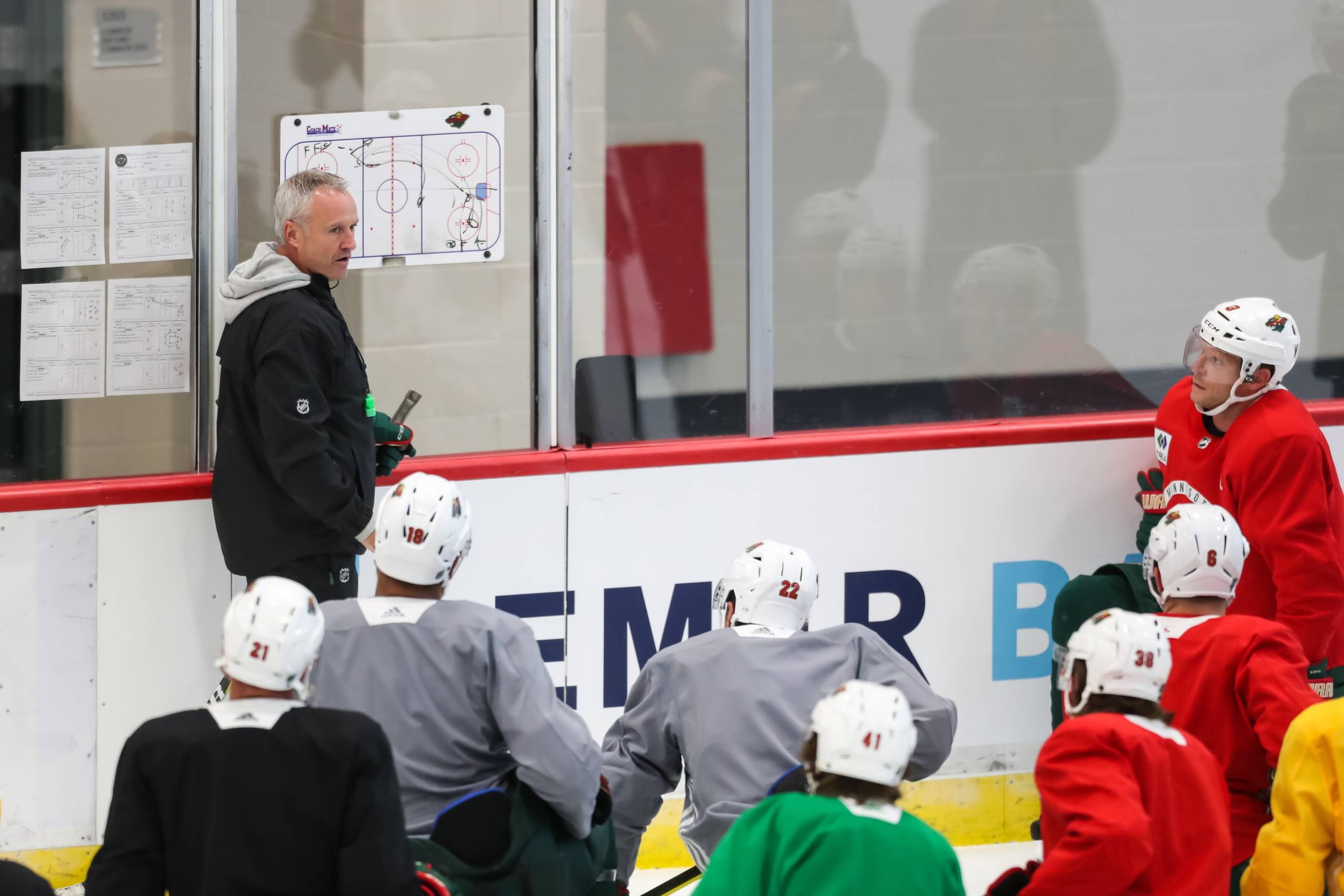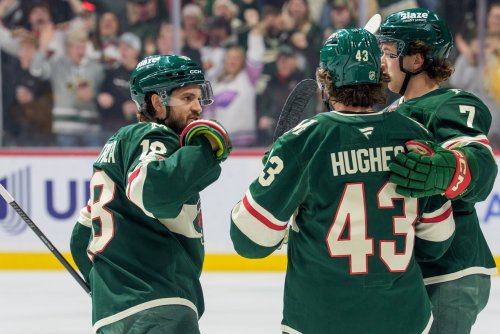
It’s not that the Minnesota Wild can’t score goals. They have shown through nine games that the team is far from snake-bitten. Scoring 2.9 goals per game isn’t elite goalscoring numbers by any means; however, it’s how they are being scored.
It’s all been done at 5-on-5.
The Wild is a strong even strength team and has been for some time. They are a grind-it-out, strong-defense kind of team. In fact, 5-on-5 suits them well as it allows them to roll four lines and beat you with depth.
Minnesota ranks 11th in the league with 20 goals, but something changes when they are a man up. Right now the power play stinks.
The Wild went into Tuesday’s game having scored on the power play twice in 39 opportunities. It’s a staggeringly bad mark for a professional hockey team. It’s currently the NHL’s worst power play. Oddly enough, the man-advantage started with so much promise.
Even with the power play units lacking a true center, the power play looked great in the first game of the season. The Wild came up empty on 11 shots over seven tries in the season opener, but the process was good -- maybe even great. There was creativity and movement. And yet, Dean Evason moved away from that dynamic-looking power play to chase faceoffs.
Throughout most of the last decade, the Wild looked more content to grind and cycle along the boards than work in open space. This work tired the forwards while they chased pucks in the corners to retain or regain puck possession. The offense was then forced upon the defensemen. Not a bad strategy when the power play features Zach Parise providing the net-front presence and Mikko Koivu, who was strong as anyone along the boards.
As the power play begins to morph into one that sharp-shooting wingers quarterback, the team looks lost. Only Kirill Kaprizov and Kevin Fiala show competence with working in space. Other players don’t know how to get open. Often, there’s miscommunication at the blue line as players reprogram from what has been their default play -- rotating the puck to the point -- to an upgraded version that features the forwards.
A POWER PLAY DISADVANTAGE
Minnesota can handle itself well at even strength. They split the shot share (11th in the NHL) and own xGF% (2nd-NHL). So why can’t that translate to the man-advantage?
The Wild turn into a perimeter team. Fiala and Kaprizov can both score from distance. Furthermore, Wild defensemen can score from far out as well. However, by not getting the puck to the dangerous areas of the ice, the penalty kill box doesn’t have to work as hard. Staying out on the perimeter makes it easy for goaltenders. The eye test bears this out, but the numbers do too. At 5-on-5, they have racked up 11.85 High-Danger chances per hour. That number ranks sixth in the league. While Minnesota supposedly has an advantage, that ranking falls to 26th in the league.
The effects are a cellar-dwelling power play. Sound the alarms because it’s going the wrong way.
CALLING OUT THE BENCH BOSS
This is where coaching decisions come into play. After the first night, Evason made drastic changes, essentially wasting all the time during training camp spent on his power-play alignment. He’s gone back to that opening night power-play unit just a handful of times since. The first action was splitting up Kaprizov and Fiala. Then Evason added Victor Rask and Nick Bonino to the power-play units.
Obviously, if a power-play unit with Fiala and Kaprizov is unable to score, it’s a bad thing. Add in that the Wild can’t even boast a second unit worthy of noting. Joel Eriksson Ek, the Wild’s best center and big rig with a lot to prove Jordan Greenway have yet to find meaningful time. They are often thrown over the boards in the final seconds of the power play as Evason transitions from the unsuccessful power play to his normal 5-on-5 shift rotations.
It’s much more than Eriksson Ek being the team’s best center and Greenway possessing a sizable chip on his shoulder. Those two happen to lead the Wild in goals and points, respectively. Together, they’ve joined forces to become the biggest surprise of this young season. Yet, Bonino found time with Kaprizov on the power play.
INJURIES TAKING A TOLL
The team would have had issues absorbing the loss of Fiala to suspension. Losing Marcus Foligno, Matt Dumba and Marcus Johansson makes operating a power play with the best weapons impossible. A rash of injuries is handicapping Evason’s roster decisions. Different players have to step up. Some haven’t played in nearly 10 months.
Evason was tinkering with the units to find the right mix before injuries hit the squad. Now, as the injuries mount, tinkering is done out of necessity. They say chemistry in hockey is important. As players learn each other’s styles and thinking patterns, they can better anticipate the next move. The inconsistency of the power-play units doesn’t allow them to gel.
The power play had a chance to be exciting, creative and dynamic. It gets to feature two young studs that can use the extra space to shine. A good power play helps a team eke out more standings points. It’s a weapon in the arsenal and should be treated as one. It’s not. The Wild can’t seem to harness their tenacity and ability to attack the net from even strength and deploy it into the man-advantage. It’s time to sound the alarm on this stinky power play because the Wild aren’t lighting the lamp, and it’s not getting better.
Think you could write a story like this? Hockey Wilderness wants you to develop your voice, find an audience, and we'll pay you to do it. Just fill out this form.







Recommended Comments
Join the conversation
You can post now and register later. If you have an account, sign in now to post with your account.
Note: Your post will require moderator approval before it will be visible.